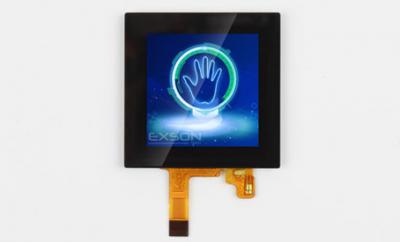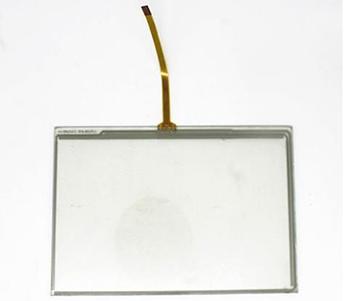LCD (Liquid Crystal Display), for many users, maybe a not new term. LCD is a kind of display made of liquid crystal. A liquid crystal is a kind of organic compound between a solid state and a liquid state. Under normal temperature conditions, it shows both liquid fluidity and optical anisotropy of crystal. When heated, it will become a transparent liquid state, and when cooled, it will become a crystalline tursidized solid state. As the mainstream technology in the display industry, types of LCD display are various, each with different characteristics.
The biggest feature of TN is that the price is relatively low, the technical entry threshold is low, and it is widely used. In general, the TNlcd display is a product with obvious advantages and disadvantages. The price is cheap, the number of output gray levels is small, and the deflection speed of the liquid crystal molecules is fast, which makes it easy to improve the response time, but the viewing angle is not ideal and the color performance is unreal is its obvious disadvantage.
IPS is: InPlaneSwitching is also called full viewing angle. Its biggest selling point is that its two poles are on the same surface, unlike other liquid crystal mode electrodes that are arranged on the upper and lower sides and are three-dimensionally arranged. Since the electrodes are on the same plane, the liquid crystal molecules are always parallel to the screen regardless of the state, which will reduce the aperture ratio and reduce the light transmittance. Therefore, the application of ips lcd panel on LCD will require more backlights.
This type of panel is the most common type of high-end LCD. The 16.7M color number and large viewing angle are the capital of this type of panel positioning high-end. At the same time, the VA type can be divided into MVA panel and PVA panels.
1. The long axis of MVA's liquid crystal molecules is not parallel to the screen like the TN mode when it is not powered on, but perpendicular to the screen, and each pixel is composed of a plurality of such vertically oriented liquid crystal molecules.
2. PVA wide viewing angle technology (soft screen), PVA wide viewing angle technology also belongs to the category of VA technology. In fact, it is very similar to MVA, which can be said to be a deformation of MVA. PVA uses transparent ITO electrodes to replace the liquid crystal layer protrusions in MVA. The transparent electrodes can obtain better aperture ratio and minimize the waste of backlight sources. This mode greatly reduces the likelihood of "bright spots" appearing on the liquid crystal display panel.
LCD display can be roughly divided into these categories, TN, IPS, VA (MVA, PVA), and each category also has different characteristics, mainly depends on what type of terminal products it is used in, the most suitable one is the best. of.
 What Are the Characteristics of LCD Display Panels?September 26, 2022Ⅰ. What are the characteristics of LCD display panels?1. The body is thin and space-saving: Compared with the bulky CRT display, the LCD display panel only needs one-third of the space of the former....view
What Are the Characteristics of LCD Display Panels?September 26, 2022Ⅰ. What are the characteristics of LCD display panels?1. The body is thin and space-saving: Compared with the bulky CRT display, the LCD display panel only needs one-third of the space of the former....view How Industrial TFT LCDs Reshape Visual ExperiencesJanuary 29, 2024In the ever-evolving landscape of technology, Industrial TFT LCD displays have emerged as a transformative force, reshaping the way we perceive and interact with visual information in industrial setti...view
How Industrial TFT LCDs Reshape Visual ExperiencesJanuary 29, 2024In the ever-evolving landscape of technology, Industrial TFT LCD displays have emerged as a transformative force, reshaping the way we perceive and interact with visual information in industrial setti...view High-Quality TFT LCD Display Modules in Interactive LearningDecember 8, 2023In the dynamic landscape of education, the integration of cutting-edge technology has become a catalyst for transformative learning experiences. Among these innovations, high-quality TFT LCD display m...view
High-Quality TFT LCD Display Modules in Interactive LearningDecember 8, 2023In the dynamic landscape of education, the integration of cutting-edge technology has become a catalyst for transformative learning experiences. Among these innovations, high-quality TFT LCD display m...view What Are the Advantages of Resistive Touch Screen?February 8, 2023Resistive touch screens were first invented in 1971 by Dr. Samuel G. Hurst. He calls the sensor the Elograph, after his company, Elographics.Ⅰ. What is a resistive touch screen?As the name suggests, ...view
What Are the Advantages of Resistive Touch Screen?February 8, 2023Resistive touch screens were first invented in 1971 by Dr. Samuel G. Hurst. He calls the sensor the Elograph, after his company, Elographics.Ⅰ. What is a resistive touch screen?As the name suggests, ...view Advantages of WUXGA TFT Display Over Traditional Screen TechnologiesMay 9, 2024As technology continues to advance, display technology is also changing rapidly. In many screen technologies, WUXGA (Wide Ultra Extended Graphics Array) TFT (thin-film transistor) display with its uni...view
Advantages of WUXGA TFT Display Over Traditional Screen TechnologiesMay 9, 2024As technology continues to advance, display technology is also changing rapidly. In many screen technologies, WUXGA (Wide Ultra Extended Graphics Array) TFT (thin-film transistor) display with its uni...view The Crucial Role of Industrial TFT Displays in AutomationJanuary 29, 2024In the rapidly evolving landscape of industrial automation, technological advancements have become instrumental in enhancing efficiency, precision, and overall productivity. Among these innovations, I...view
The Crucial Role of Industrial TFT Displays in AutomationJanuary 29, 2024In the rapidly evolving landscape of industrial automation, technological advancements have become instrumental in enhancing efficiency, precision, and overall productivity. Among these innovations, I...view Call us on:
Call us on:  Email Us:
Email Us:  2F-M1 XiaWei Industrial Park, GuanLan, LongHua District, SZ, China
2F-M1 XiaWei Industrial Park, GuanLan, LongHua District, SZ, China